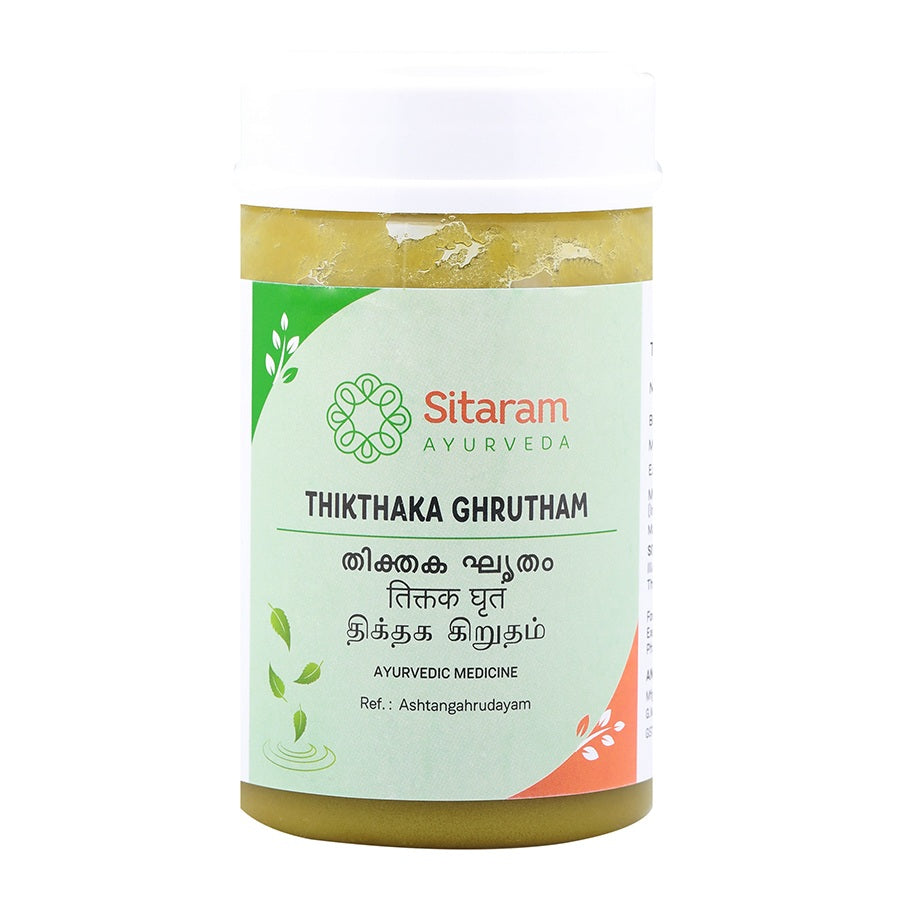Skip to product information

Ayurvedic materia medica lists groups of drugs based on their ‘rasa’ or taste. Drugs dominant in 'Tikta rasa' or bitter taste act upon deranged Pitta and ‘digest’ it. This maybe understood as the resolution of inflammatory changes in the gut as well as skin, bones, joints and supporting tissue. Tiktaka Ghrita is a balancing combination of ‘Pitta-Samana’ drugs in a nourishing ghee base.
‘Ghrita’ or medicated ghee harnesses the healing properties of herbs and roots in a nourishing fat base. Ayurveda attributes ‘Sookshma’ property to ghrita, i.e. It is capable of reaching deep into tissues, and heals from within. It is perfectly suitable for long-term use in sustaining the effects of treatment in a body and preventing relapse.

tiktaka ghrita 150 gm
₹360.00
Reliable shipping
Flexible returns

